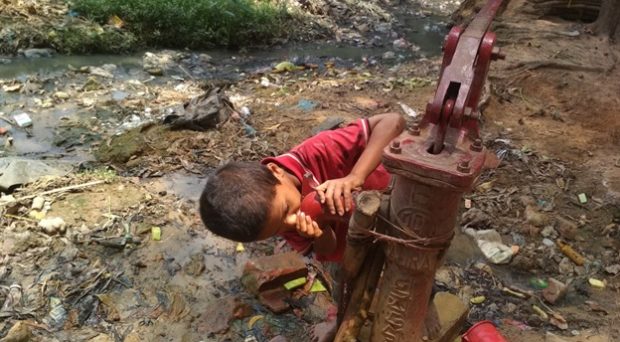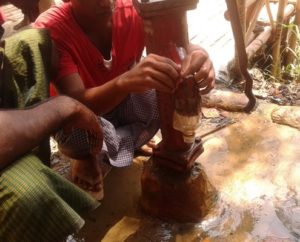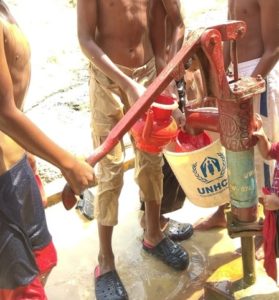
The Rohingya emergency
Since August 2017, around one million Rohingyas fled to Bangladesh following a wave of targeted violence in the neighboring Rakhine State of Myanmar. Most of the forcibly displaced Rohingyas settled in a series of camps in Ukhia and Teknaf upazilas (sub-districts) of Cox’s Bazar. The need for humanitarian assistance, including shelter, safe water, food, and sanitation, has been tremendous and increasing day by day.
Collectively, a total of 6,057 water points and 50,087 emergency latrines have been built to support the needs of the camp’s inhabitants. But in the hilly terrain of Cox’s Bazar, the large influx of Rohingyas gathering at an unplanned and unprompted settlement has created an unprecedented challenge in meeting water, sanitation, and hygiene (WASH) needs. Such forcibly shifted stressed populations could be highly predisposed to the possibility of acute watery diarrhea and other water-borne diseases.
Why a humanitarian intervention is needed
From a humanitarian point of view, we feel that quality water supply (adequate, safe, and accessible) is essential and must be ensured to all human beings for a healthy life. Given the dire conditions in the Rohingya camps, it is imperative that every family has access to safe drinking water to survive their challenging conditions. Different aid organizations, along with the Government of Bangladesh, assisted and are still serving to adequately address the needs of these displaced populations.
The International Centre for Diarrhoeal Disease Research, Bangladesh (icddr,b) has also stepped in to offer our unique expertise. With financial support from UNICEF, we started our work testing the quality of source water (from tubewells) and household drinking water.
What we found
To find out the contamination status of the aquifer, we performed a specific method of collecting water samples after burning the mouth of the tubewells. This determined if the contamination is coming from the mouth of the tubewell or the aquifer.

We found that before decontamination, 28% of water samples derived from tubewells were found contaminated, whereas, after burning the mouth of the tubewells, the contamination level decreased extensively, indicating that most of the underground aquifers are safe. We can also assume that contamination is occurring from a secondary source.
This secondary contamination might occur due to the mouth of the tubewells being contaminated through various unhygienic measures (e.g. by inserting the tubewell’s hose directly into water pots used in latrines; rubbing hands against the tubewell hose after coming from the latrine, etc).
Alarmingly, we found that the contamination level increased from 28% to 74% when the water from the tubewell was carried and placed in the household storage. This substantial increase in contamination suggests that secondary contamination might occur during the collection, transportation, and storage of water due to inadequate knowledge and lack of personal and domestic hygienic practices.

Moreover, given that over one million Rohingyas have been living in a four square kilometer area comprising of 32 informal camps, this high population density could be another factor in triggering secondary contamination.
Based on our study findings, we recommend taking necessary measures to raise awareness of proper hygienic practices, which will significantly improve the drinking water quality in the Rohingya camps. Besides this, the contaminated sources should be replaced, and the contaminated household water must be treated by a suitable method to provide safe drinking water.
Dr. Zahid Hayat Mahmud
Latest posts by Dr. Zahid Hayat Mahmud (see all)
- Ensuring safe drinking water in Rohingya camps of Cox’s Bazar, Bangladesh - 4th November 2019
Comments